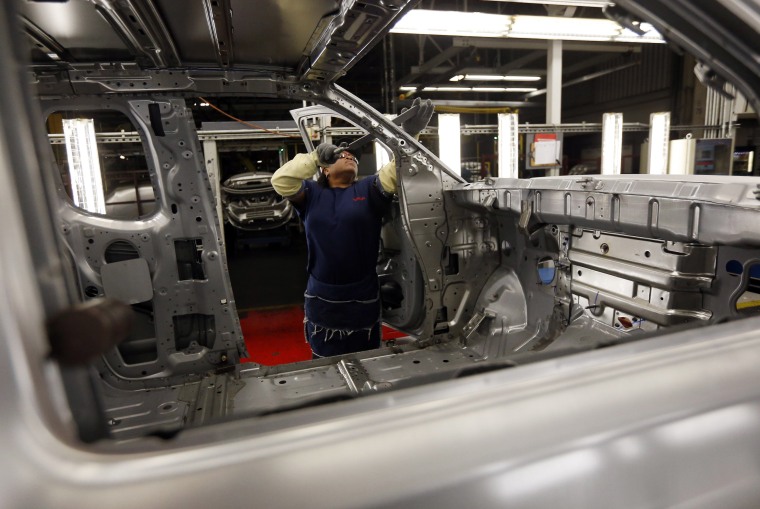Across America, manufacturing is changing from the traditional assembly line to the use of collaborative robots. By 2025, industrial robots are expected to perform 25 percent of tasks such as assembly, packaging, and material handling.
“Instead of these old factories that are very laborious and have a lot of big machinery, manufacturing is going to look more like software, and have machines that are running off of digital files," said Jonathan Schwartz of Voodoo Manufacturing, a 3-D printing company in Brooklyn, New York.
Schwartz and fellow co-founder Max Friefeld rely on 160 3-D printers to manufacture nearly 50 different projects, from key chains to T-Rex shower heads, all at once.
“We're focused on doing this at high volume, cost effectively," said Friefeld. "3-D printing used to be 10 units, 20 unit prototypes. Now we do thousands for every order.”
The Rebirth of Manufacturing
Bringing manufacturing jobs back to the U.S. is a top priority for President Donald Trump, who has made "Buy American, Hire American" a key element in his pro-business agenda.
However, the manufacturing industry is no longer what it used to be. According to the U.S. Bureau of Labor Statistics, 4.9 million manufacturing jobs have disappeared in the past 20 years — in part because of increased automation.
Industry executives say today's manufacturing is about collaboration with innovation, and learning to work hand in hand with robots.
Helping to take Voodoo to the next level of a modern-day factory is Jim Allen, director of manufacturing.
“I think they're gonna adapt," he said of traditional manufacturing businesses. "There are examples of companies that have been tool and die, automotive, and other industries where [now] they're using robotics.”
Robots Create Jobs
Voodoo isn't the only manufacturing company taking the leap into 3-D printing. Big brands such as GE, Adidas, Boeing, Ford, Nike, Hasbro, and Hershey's are also integrating the technology into their products.
The fear of robots replacing humans in the manufacturing industry is a growing concern for millions of unemployed Americans. But Allen says there is a silver lining that comes with technological advances.
“Because of automation, we're increasing our productivity. We're able to get more products out there at a lower cost at higher quality. Being able to do that increases demand, increased demand creates more jobs — so it's a self-fulfilling cycle of creating more jobs,” said Allen. “We have to be competitive with the other processes and other countries. And that enables us to create more jobs.”

